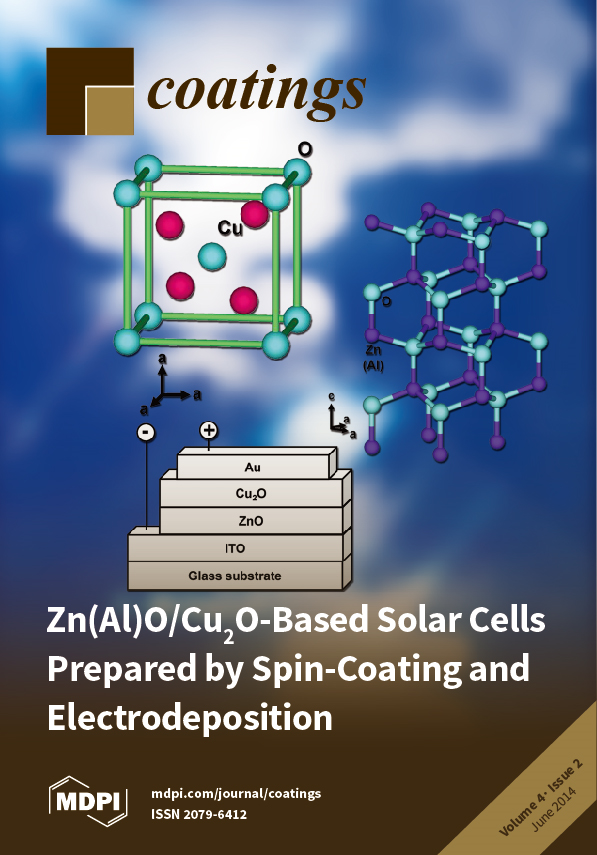Ti
1−xCr
xN thin-film samples were sputter-deposited with lateral composition gradients
x = 0.1–0.9 across each sample. In order to determine the effect of Cr content on oxidation, samples were air-oxidized at temperatures ranging from 650 to 950 °C. The
[...] Read more.
Ti
1−xCr
xN thin-film samples were sputter-deposited with lateral composition gradients
x = 0.1–0.9 across each sample. In order to determine the effect of Cr content on oxidation, samples were air-oxidized at temperatures ranging from 650 to 950 °C. The extent and type of oxide formed was characterized using X-ray diffraction. Only minor oxidation was observed for the 650–750 °C temperature range. At 850 °C, films below
x = 0.7 showed poor oxidation resistance, with the formation of TiO
2 and Cr
2O
3 oxides, but little oxidation occurred above
x = 0.7. At 950 °C, films above
x = 0.7 again exhibited the best oxidation resistance. Chromium nitride films, which deposited as Cr
2N, were found to begin oxidizing at 750 °C, indicating that the increased oxidation resistance of the higher-Cr Ti-Cr-N films can be attributed to the Ti-induced stabilization of the B1-structured phase. A compositionally-uniform film (
x = 0.79) was also deposited and analyzed by XPS before and after oxidation. Oxidation resulted in primarily Cr
2O
3 at the surface, with some TiO
2 also present, with the oxide richer in Cr than the starting film composition. These results suggested that at higher Cr compositions in the film, the oxidation mechanism was controlled by Cr diffusion to the surface.
Full article





